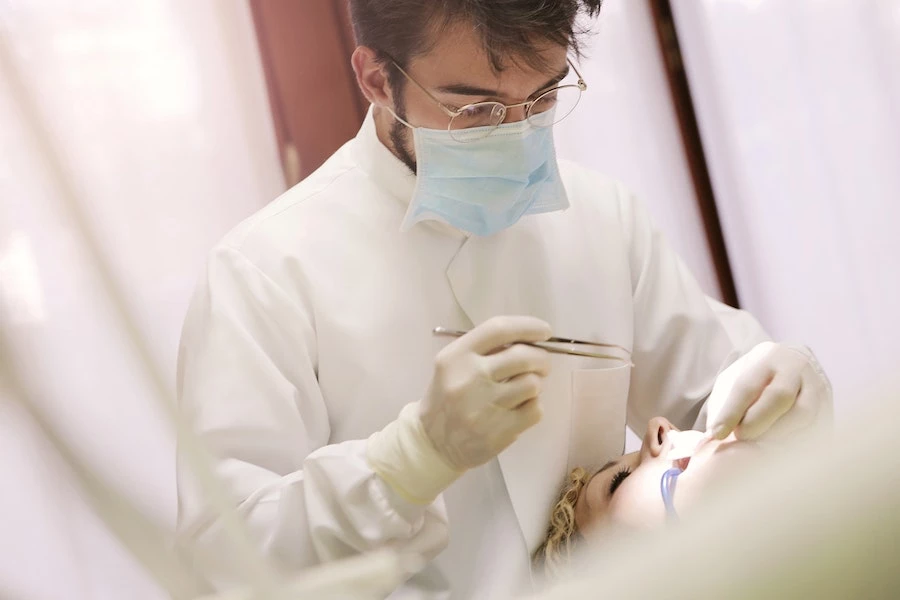
To be on the safe side, you will be a competitive applicant at all 10 of the best medical schools if you have a 3.9+ GPA and 520+ MCAT score. Top medical schools want to know that you have completed all of the extracurricular activities needed by most programs in addition to your academic success.
How Hard Is It To Get Into A Top Medical School?
It’s difficult to get into medical school, period. Only 41% of candidates to American medical schools matriculated in the 2019–2020 application season, which means that roughly 60% of applicants most certainly didn’t get in anywhere. Acceptance rates under ten percent are common, even at less well-known medical schools.
The prospects are even more bleak at the most esteemed medical schools. Top-tier medical schools often have admission rates of less than 5%, and accepted students typically have high GPAs and MCAT scores (around 3.8 and 518, respectively).
Given Harvard’s reputation for academic rigor, your chances of admission to medical school are excellent if you fall within this range. GPA and MCAT scores are among the criteria that admissions committees give the highest weight to, making them what we call “tier one” admissions considerations.
But if you want to get into the most prestigious medical schools, you should consider your academic achievements to be a starting point rather than a sufficient qualification. Finding alternative methods to stand out is essential since the top medical schools get hundreds of applications from academically talented candidates.
What Are Medical Schools Looking For?
Examining the Association of American Medical Colleges’ list of “key competencies” can help us better grasp what the admissions committees for medical schools are looking for. Successful candidates, according to the AAMC, should be able to exhibit a variety of traits that they categorize under the following competencies: Thinking and reasoning, Science, and Pre-professional.
Criteria for the first two competences include comprehension of living systems, written communication, and critical thinking. Rest assured that demonstrating these abilities should largely take care of itself if you take the time to thrive in your premed classes and other assignments.
The pre-professional competences list outlines the human qualities that medical students and, by extension, doctors, should possess. These include a commitment to serving others, dependability, cultural sensitivity, and strong social skills.
How could you best display these qualities? Your extracurricular pursuits, application materials, and interviews are all fantastic opportunities to demonstrate that you are not only academically ready for a top medical school, but that you also possess the personal qualities required to become a top-notch physician.
Developing An Outstanding Extracurricular Profile
There are several reasons why showcasing a diverse range of extracurricular activities is important. It gives admissions committees a glimpse into your character, which is crucial in a service-oriented field like medicine, as we previously discussed. For instance, demonstrating devotion by volunteering at the same soup kitchen for four years. Your ability to operate in a team is demonstrated when you participate in research.
Your active involvement in extracurricular activities demonstrates your interest in and initiative in the medical area. Additionally, it shows that you’re motivated to learn everything you can.
What does “robust” actually mean, though? Earlier, we used the word to define the optimal approach to extracurricular activities. Many prospective medical students believe that they must engage in all possible extracurricular activities and check every metaphorical box. You run the danger of not contributing much to any of your activities if you adopt this mentality.
Concentrating intensely and intently on one or two things is a far more successful method. In other words, even while it’s crucial to show that you have knowledge of and experience in all five of the aforementioned categories, you should also pursue your extracurricular activities with the goal of developing one to two areas of expertise.
Consider an issue that isn’t being handled right now, for instance, and explore ways to take action to address it, such as by planning an outreach campaign, arranging a fundraiser, or establishing your own spin-off group. If you belong to a volunteer organization, for instance. Another option is to finally ask your principal investigator (PI) whether you may work on your own project with the aim of publishing original findings if you are employed in a lab.
Putting Together Strong Application Materials
Aside from packing them for your medical school applications, getting high grades and standing out in your extracurriculars are two different things.
For a few reasons, it’s crucial to devote the time and work into your application materials. They provide you with the opportunity to showcase your qualities and accomplishments, but they are also your best chance to frame your record of success and show that you are deserving of acceptance.
Your personal statement, the Work and Activities portion of your AMCAS application, and your secondary essays are three crucial elements of your medical school applications.
Final Thoughts
It’s a difficult, competitive procedure to apply to medical school, especially if you want to get into the best programs. You will be put in the category of suitable applicants by receiving good MCAT scores and excellent grades, especially from a prestigious college like Harvard. You may show that your temperament and character are as remarkable as your academic accomplishments by becoming an expert in your extracurricular activities, creating outstanding application materials, and nailing your interview. Work hard to set yourself apart from the competition, and you’ll be well on your way to getting accepted to the most prominent and selective medical schools in the nation.








